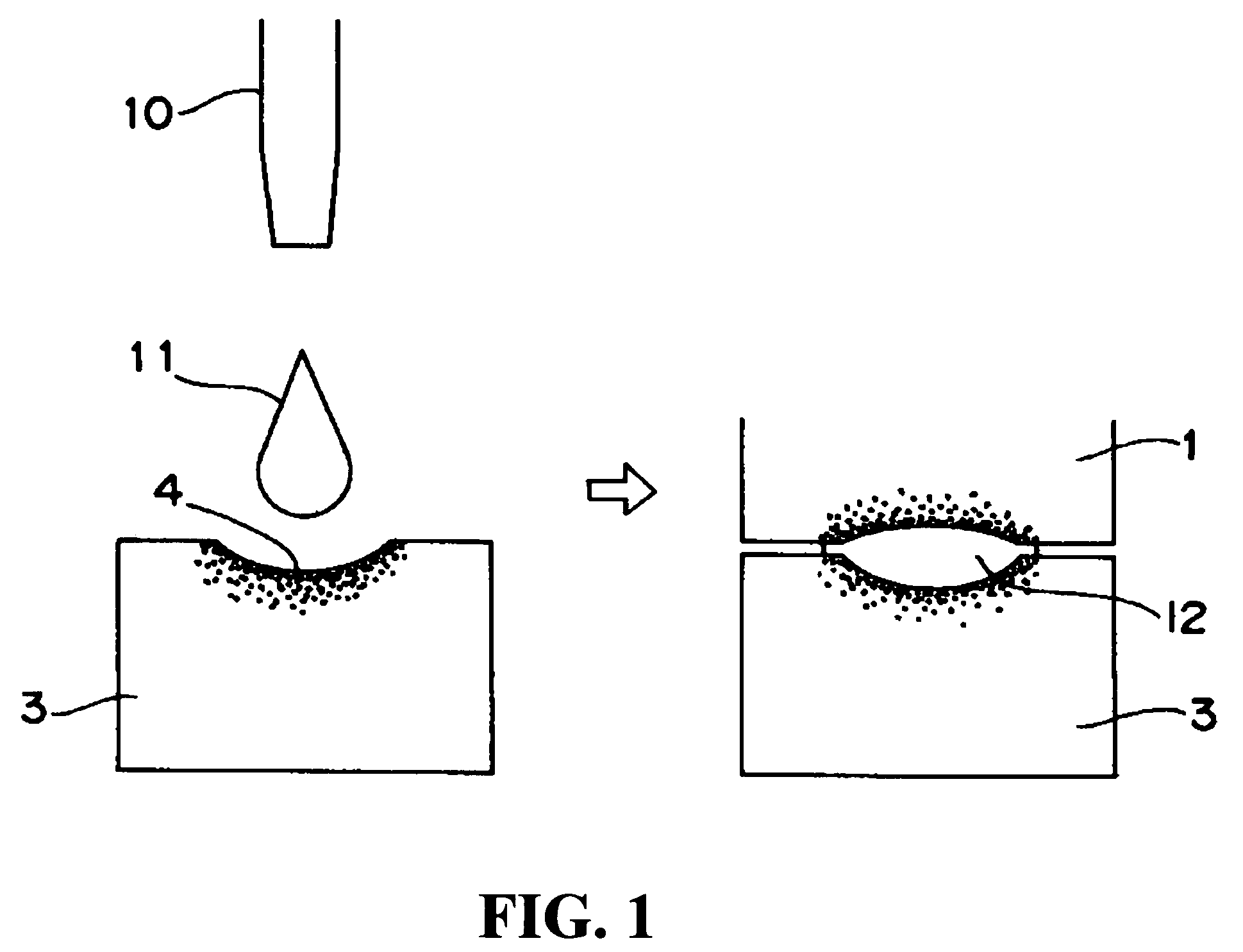Optical glass and optical element
a technology of optical elements and optical glass, which is applied in the direction of glass tempering apparatus, instruments, manufacturing tools, etc., can solve the problems of increasing production costs, short die life, and increasing production costs, and achieves excellent devitrification resistance, small density, and low tg
- Summary
- Abstract
- Description
- Claims
- Application Information
AI Technical Summary
Benefits of technology
Problems solved by technology
Method used
Image
Examples
Embodiment Construction
[0032]A reason why components of optical glass of the present invention are selected as described above is explained below. SiO2 is a component (glass former) composing a glass skeleton, and when its content is less than 20%, the durability of the glass is deteriorated. On the other hand, when the content of SiO2 exceeds 45%, devitrification resistance is deteriorated. The content of SiO2 is, therefore, set to 20 to 45%. The more preferable content of SiO2 is in a range of 20 to 40%.
[0033]B2O3 is a component composing the glass skeleton similarly to SiO2, and when the content of B2O3 is less than 15%, the glass is devitrified easily. On the other hand, when the content exceeds 40%, the durability is deteriorated. The content of B2O3 is, therefore, set to 15 to 40%. The more preferable content is in a range of 20 to 35%.
[0034]Al2O3 improves the durability of the glass and increases viscosity. When the content of Al2O3 is less than 4%, the durability of the glass is deteriorated and t...
PUM
| Property | Measurement | Unit |
|---|---|---|
| refractive index | aaaaa | aaaaa |
| Abbe number | aaaaa | aaaaa |
| density | aaaaa | aaaaa |
Abstract
Description
Claims
Application Information
 Login to View More
Login to View More - R&D
- Intellectual Property
- Life Sciences
- Materials
- Tech Scout
- Unparalleled Data Quality
- Higher Quality Content
- 60% Fewer Hallucinations
Browse by: Latest US Patents, China's latest patents, Technical Efficacy Thesaurus, Application Domain, Technology Topic, Popular Technical Reports.
© 2025 PatSnap. All rights reserved.Legal|Privacy policy|Modern Slavery Act Transparency Statement|Sitemap|About US| Contact US: help@patsnap.com

